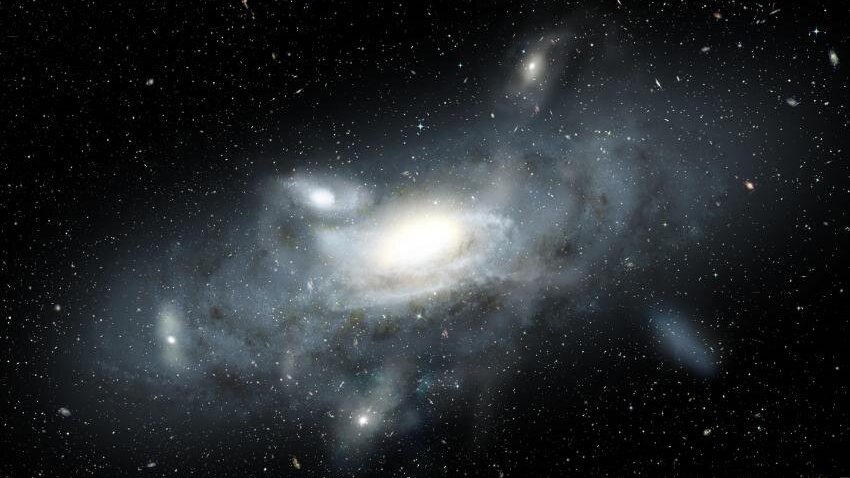James Webb telescope finds Milky Way's long-lost twin 9 billion years in the past
The light from the distant Sparkler galaxy was spotted in the James Webb Telescope's First Deep Field and could teach us how our own Milky Way devoured other galaxies to grow.

A sparkling cannibal galaxy discovered by the James Webb Space Telescope appears to be a "very early" mirror image of the Milky Way, and it could help astronomers understand how our galaxy took shape, a new study has revealed.
Located 9 billion light-years from Earth, the galaxy is named the "Sparkler" after the dwarf galaxies and two dozen globular clusters — swarms of millions of stars bound together by gravity — that shine around it. According to the study authors, the galaxy is voraciously gorging upon these nearby objects to grow ever larger.
The cosmic feeding frenzy was discovered in Webb's First Deep Field — the deepest and most detailed view of the universe ever captured, and the James Webb Space Telescope's (JWST) first full-color picture. Released in July 2022, the image shows the Sparkler galaxy as a warped orange line surrounded by spots of light. Now, an analysis published Dec. 26 in the journal Monthly Notices of the Royal Astronomical Society has revealed that the galaxy is growing by cannibalizing its neighbors — much like the young Milky Way is thought to have done.
Related: Can the James Webb Space Telescope really see the past?
"We appear to be witnessing, first hand, the assembly of this galaxy as it builds up its mass—in the form of a dwarf galaxy and several globular clusters," lead-author Duncan Forbes, a professor of astrophysics at Swinburne University of Technology, Australia, said in a statement. "We are excited by this unique opportunity to study both the formation of globular clusters, and an infant Milky Way, at a time when the universe was only one-third of its present age."
Twinkling from within the Volans constellation in the southern sky, the distant Sparkler's light took 9 billion years to travel to us; arriving at the James Webb Space Telescope after the space-time warping gravitational pull of the galaxy cluster SMACS 0723 acted as a gigantic lens to steer it into focus.
This travel time means that the light reveals the galaxy as it was just 4 billion years after the Big Bang. At this point in our universe's ancient history, the Sparkler was just 3% of the Milky Way's mass, but in the present day, scientists expect that the ravenous giant has stuffed itself to match the size of our own galaxy.
Get the world’s most fascinating discoveries delivered straight to your inbox.
Scientists think this because they observed some key resemblances between the Sparkler and our own Milky Way. By analyzing the globular clusters that surround the Sparkler, the scientists discovered that star swarms resemble younger versions of the roughly 200 globular clusters spotted around the Milky Way. And the Sparkler's active consumption of a nearby dwarf galaxy is another notable parallel to our galaxy's monstrous past — the evidence for which we see in the remnant trails of stars and clusters from shredded galaxies strewn outside our galactic disc.
Scientists are still unsure how stars came to clump into globular clusters, but the Sparkler offers a glimpse of the cosmic enigmas when they were young.
"The origin of globular clusters is a long-standing mystery, and we are thrilled that JWST can look back in time to see them in their youth," co-author Aaron Romanowsky, a professor of astronomy at San Jose State University, California, said in the statement.
With the Sparkler's resemblance to our own galaxy clearly established, the researchers now want to use deeper imaging to spot more clusters around the distant galaxy and learn even more about how both it and our own galaxy came to be.

Ben Turner is a U.K. based writer and editor at Live Science. He covers physics and astronomy, tech and climate change. He graduated from University College London with a degree in particle physics before training as a journalist. When he's not writing, Ben enjoys reading literature, playing the guitar and embarrassing himself with chess.



